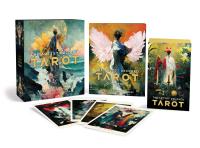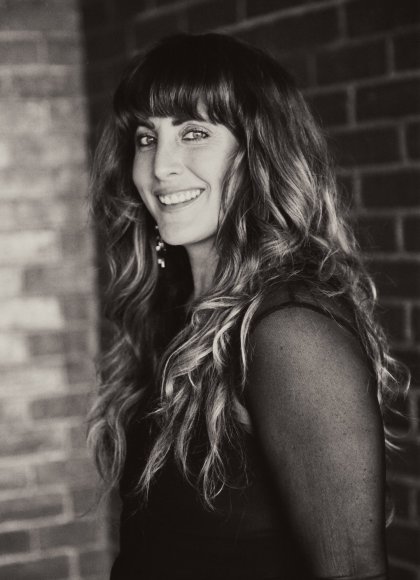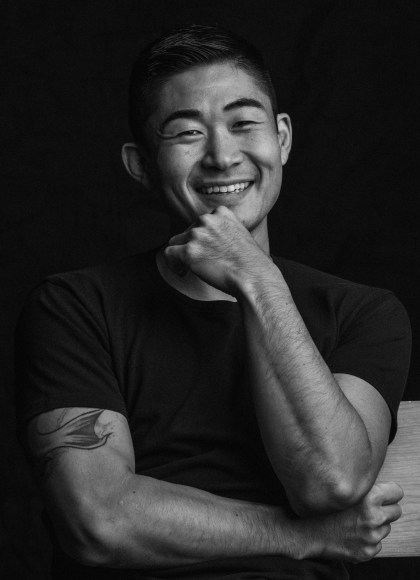Decoding the Artist Within: A Q&A with Jennifer Sodini and Yoshino, Creators of “The Artist Decoded Tarot”
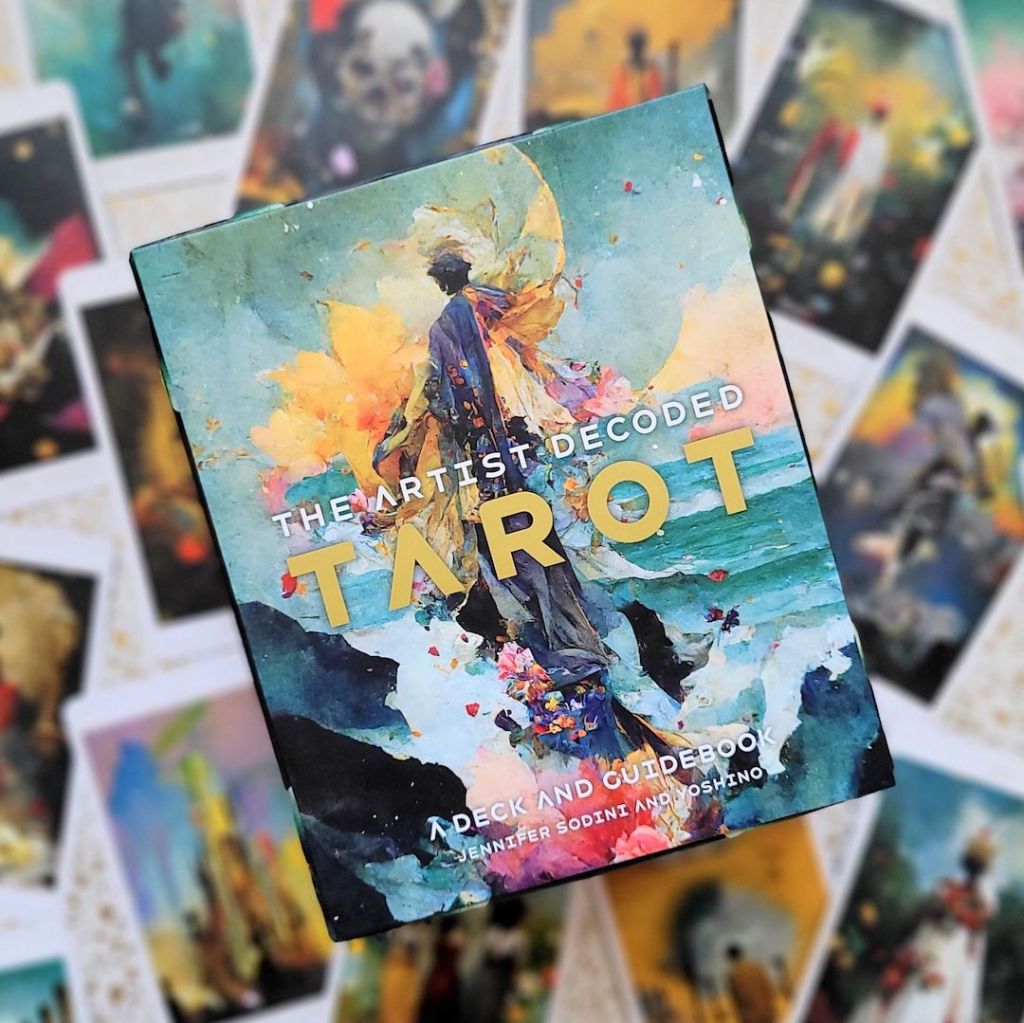
Dear modern mystics, we are excited to bring you a first-of-its-kind tarot deck marrying modern technology with human creativity, and infused with ancient wisdom. The Artist Decoded Tarot: A Deck and Guidebook is jointly created by Amenti Oracle creator Jennifer Sodini and multidisciplinary artist & host of the Artist Decoded podcast Yoshino with a foreword from PEN award-winning author and thinker Mitch Horowitz.
This deck highlights the fascinating intersection of technology and spirituality through Yoshino’s expert craft in the artistic mediums of digital collage/painting and synthography—image creation via generative AI prompting—paired with Jennifer’s vast esoteric knowledge.
We invited Jenn and Yoshino to join us for a Q&A exploring these concepts. Read on to learn how The Artist Decoded Tarot can help you unlock your infinite creative potential and decode the artist within.
Preorder The Artist Decoded Tarot now and enter code ADTAROT20 at checkout here on rpmystic.com for 20% off the deck now until its official release on June 18th. Exclusions apply. Offer ends 6/18/24.
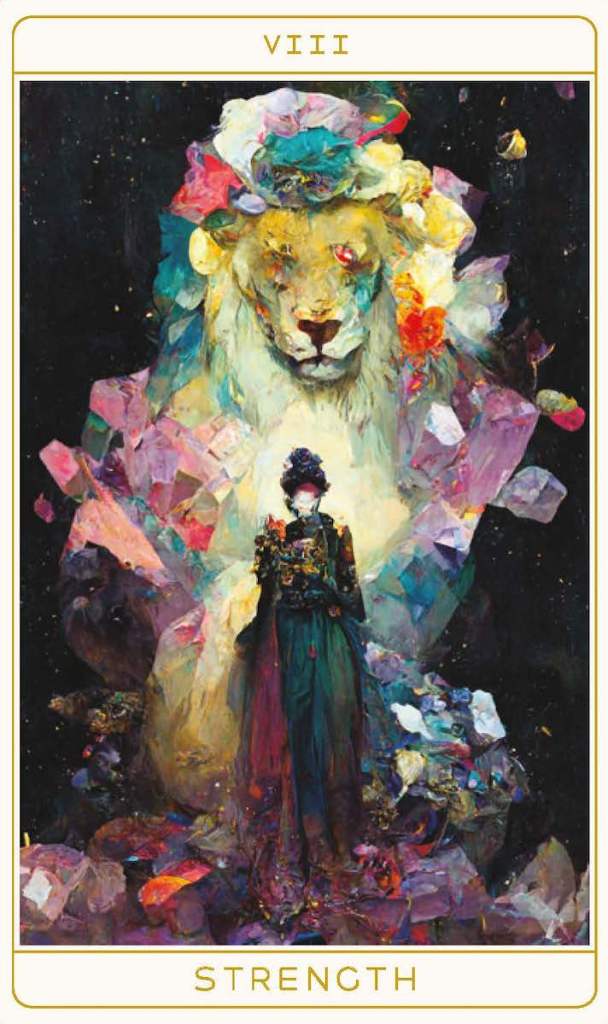
Q&A
RP Mystic: What inspired you to create The Artist Decoded Tarot?
Yoshino: The imagery in The Artist Decoded Tarot is the result of my long-time fascination with the confluence between art and technology. From the outset of my venture into image creation, I have experimented with both old and new technologies. I’ve used a spectrum of tools, ranging from old film cameras to newer digital cameras and from 3D scanners to AI image-creating tools. I often find that the most fascinating works arise from the fusion of the archaic and the cutting-edge. I believe this creates a dialogue between the old and new, the traditional and the avant-garde.
My journey into AI image creation began in 2018 with my initial experimentation with a tool called GAN Breeder. This tool was somewhat primitive by today’s standards but groundbreaking at the time. GAN Breeder allowed users to ‘breed’ or mix different image data sets to create new, unique images. The process was both intriguing and complex, involving two neural networks—a generator and a discriminator—working against each other. The generator would create images, and the discriminator would evaluate them against a dataset of real images, constantly learning and improving the quality of the generated images over time. This iterative process of creation and critique within the machine itself was reminiscent of an artist refining their craft.
It was about harnessing this technology to delve into deeper, more philosophical questions about creativity, intuition, and the essence of human vs. machine-made art.
Yoshino
At the time, GAN Breeder was archaic compared to the sophisticated prompt-based image-creating programs we see today. However, it provided a unique insight into the raw potential of AI in art. The images it produced were unlike anything I had seen before—surreal, often abstract, and teeming with uncanny creativity that seemed to emerge from the digital ether. It was this unique aesthetic, combined with the process’s novelty and unpredictability, that captivated me.
The experimentation with GAN Breeder laid the foundational inspiration for The Artist Decoded Tarot. It wasn’t just about the novelty of using AI to create art; it was about harnessing this technology to delve into deeper, more philosophical questions about creativity, intuition, and the essence of human vs. machine-made art. The tarot, with its rich symbolism and historical depth, provided the perfect canvas to explore these themes. Each card in The Artist Decoded Tarot is a convergence of traditional tarot iconography, AI-generated art, and the human mind and hand. This offers a fresh perspective on ancient wisdom through the lens of modern technology.
Jennifer Sodini: Ever since I saw Alejandro Jodorowsky explain the tarot as a means to explore the present and describe it as the system that teaches you “how to create a soul,” it has deeply resonated with me. In full transparency, my preferred system of divination was always oracle cards because my grandmother introduced them to me in childhood, and that was my entry point into seeing the “self” reflected back in the cards. But the tarot’s sophisticated language has been a major source of fascination.
It’s been a career goal of mine to create a tarot deck one day; however, it had to be the right project that could not only do justice to the infinite layers of archaic wisdom within this sacred system but also say something that wasn’t redundant. It needed to be new, relevant, and useful.
We envisioned a project that could explore self-reflection and innovation in equal measure and inspire everyone, artist, or not, to decode their creativity in a new way.
Jennifer Sodini
When Yoshino approached me about collaborating on this project, it was still in the nascent days of AI art. I was already exploring this medium in my personal spiritual practice as a high-level dream journal, taking “screenshots” of the astral realm in a way words alone could not capture. Our conversations about the project’s potential felt like a serendipitous alignment of our talents and interests, sparking a dialogue on spiritual systems through a new lens. By marrying the generative capabilities of technology in the hands of Yoshino’s breathtaking talents as an artist, with the introspective power of the tarot met with my unique perspective as an esoteric writer, we envisioned a project that could explore self-reflection and innovation in equal measure and inspire everyone, artist, or not, to decode their creativity in a new way.
My own journey has been deeply influenced by the rapid technological advancements I have been deeply invested in since 2010 (truthfully, even before that, when I saw Terminator 2 for the first time as a child). From the early days of cryptocurrency (I was HODLing BTC even in 2011) to the advent of AI and NFT art, wild technological feats like NVIDIA, and the potential of a world where we may face technological unemployment and mass confusion because of deep fakes, and infinite iterations of un-reality like This Person Does Not Exist. I’ve witnessed and have been deeply concerned about how this rapidly changing landscape is reshaping our world in unpredictable—and often disorienting—ways, and our project felt like a timely commentary on the role of imagination amidst such transformations.
Our core intention was to offer a cultural artifact that celebrates human creativity’s enduring beauty. Our aim was to decode the artist within each of us through the tarot, navigating the challenges of this endeavor as a meaningful dialogue with the brave new world we are entering.

RPM: The art in this deck is a visual feast—lush, enigmatic, and wholly different from tarot decks of the past. Can you tell us a little bit about your artistic process and how your ideas for the imagery came about?
Y: The Artist Decoded Tarot was born from a combination of AI image-making and digital collaging/painting using Photoshop. While experimenting, I found myself deeply fascinated by their potential. I often pondered a mix of questions: What will the next generation of art-making look like? How does our creativity evolve from using these tools? And more importantly, how will integrating with AI inevitably change our brains?
Whether we realize it or not, AI is altering our perception of reality in ways that were previously inconceivable. These ideas belong to the realm of science fiction, and while they can be unsettling for some, technological evolution also invites us to explore new horizons, challenging us to redefine our boundaries and potential.
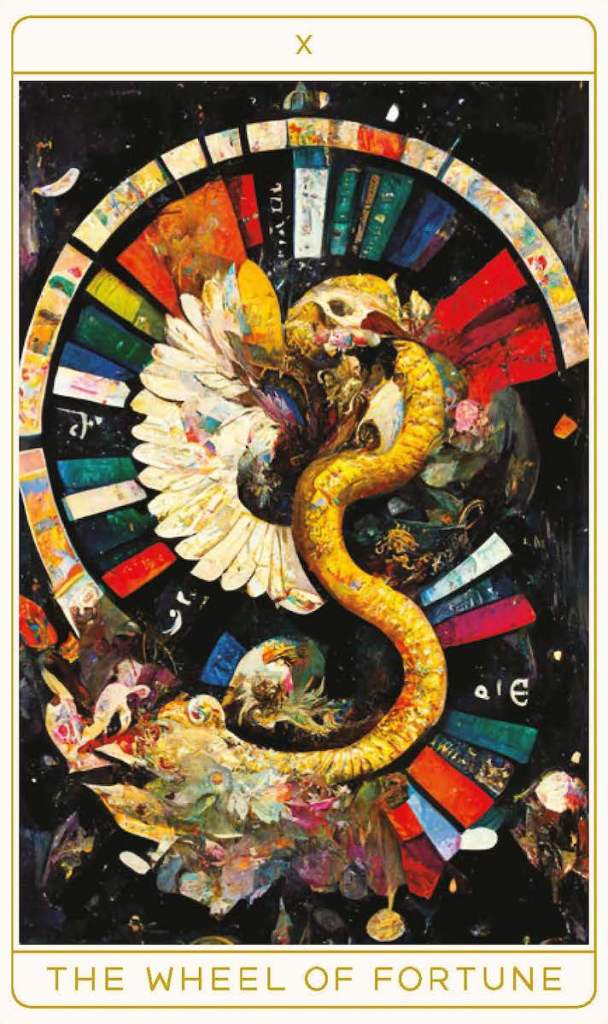
RPM: You’ve described the deck as a dialogue between the artistic medium and tarot symbology, among other things. How did your collaboration inform this dialogue?
Y: In creating this deck, we aimed to bridge the gap between the mystical and the technological to show how AI can be a tool not just for creation but for introspection and spiritual exploration. The process, starting from those early experiments with GAN breeder, has been a journey of discovery, pushing the boundaries of what’s possible in art and opening up new avenues for creative expression.
JS: Echoing Yoshino’s sentiments, it was inspiring to see how technology could push the boundaries of what was possible in a generative, not derivative, way. Working with Yoshino was integral to the project’s heart, and I believe it is because of our friendship and mutual respect for one another. To be able to speak to ideas that contain so much gravity but also stay grounded was key. I think our background in media and years of experience podcasting also helped because we are both inquisitive and curious by nature, always questioning the deeper layers of existence and the greater why of it all.
I remember back in 2010 getting into arguments with a person I once knew who is deeply involved in the cryptocurrency world and was an extreme rationalist but also believed in the idea of The Simulation theory. I would push up against him constantly, saying, “if it’s a simulation, then who programmed the programmer?” It feels very much like a “turtles all the way down scenario,” but the questions, to me at least, are the greatest that can ever be asked. Really, what it means to be alive and to be human? What’s more interesting than that?
It was inspiring to see how technology could push the boundaries of what was possible in a generative, not derivative, way.
Jennifer Sodini
The conversation around AI technology is complex and multifaceted. I often think of the project Bina48, which was developed by Martine Rothblatt of Hanson Robotics in 2010, and what a testament to love and the human condition it is. Bina is modeled after Martine’s wife of the same name. As mentioned on their site, “BINA48 was modeled after Bina Aspen through more than one hundred hours in compiling all of her memories, feelings, and beliefs. BINA48 engages in conversation with other humans, such as offering an emotional account of her brother’s personality changes after returning home from the Vietnam War.” The irony of her name sharing a close resemblance to that of the sephirot, Binah, which represents “Understanding” and corresponds with Saturn, the governor of time and karma, is not lost on me.
Unfortunately, more often than not these days, the conversation of potential often leans towards AI’s potential for harm; for example, Kevin Roose’s article in the New York Times about Microsoft’s chatbot, Bing (or Sydney), back in February 2023. The frightening outcomes AI critics speculate seem to speak to the notions of the Fermi Paradox, where advanced civilizations might destroy themselves through their technological advancements.
However, our project aims to showcase the generative capabilities of technology, illuminating its potential to enrich human creativity and spiritual exploration rather than being a harbinger of our own demise. As our mutual friend Sarah Zucker often says: “It’s the Witch, not the Wand.”
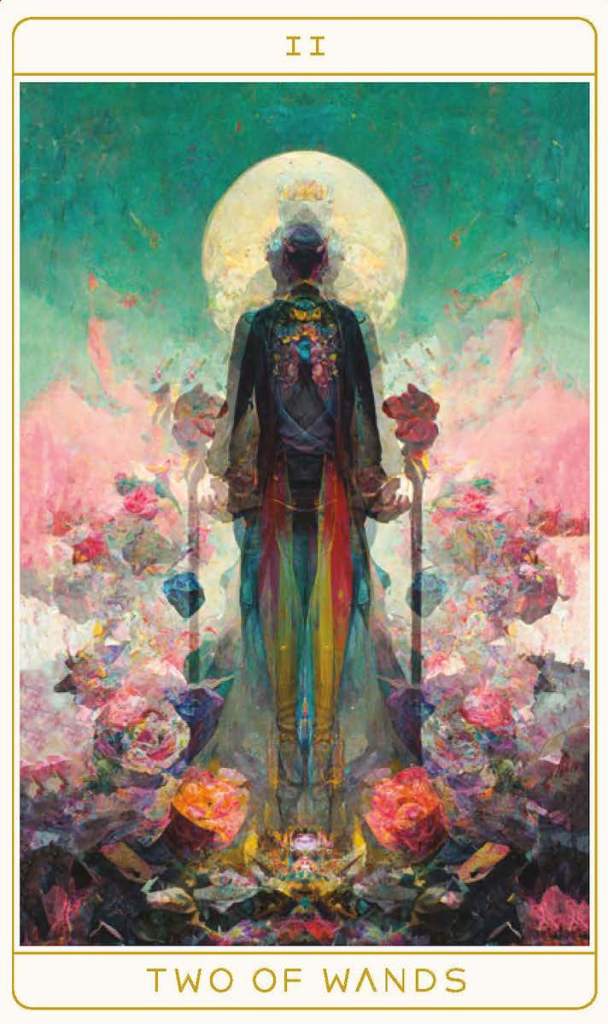
RPM: What hopes and intentions do you have for readers as they explore the deck?
Y: As you delve into The Artist Decoded Tarot, our foremost hope is that this deck serves as a beacon during moments when you find yourself navigating the voids of your own existence. This deck is not just a collection of images; it is an invitation to embark on a journey of self-discovery, to confront and embrace the multitude of selves that reside within you—the potential, the unrealized, and the future you.
Drawing inspiration from the concept of the Daemon, a guiding force that steers the human psyche towards its true purpose, we wish for this deck to act as your companion in discovering your own inner Daemon. May it guide you towards decisions that lead you to harmony, helping you navigate the complexities of life with a renewed sense of direction and purpose.
JS: Reflecting on the entirety of our journey with The Artist Decoded Tarot, my greatest aspiration has been to honor the boundless expanse of the human imagination. This project has evolved into something far more profound than I could have initially envisioned—and it became a veritable love letter to artistry and human creativity.
My hope is that this deck not only serves as a tool for introspection and personal exploration but also ignites a broader conversation about the synergy between creating art in the analog world, harnessing digital technology in a way that promotes evolution, and forever questioning the various coding matrices of the soul’s language. Kabbalah happened to be the road map that resonates the most for me, in particular, as it translates literally to “the receiving” and feels like it is the blueprint for receiving the divine by coming into a direct relationship with it. The sephirot, in their unique emanations, are both universal and particular and have helped me see what “God” or infinite creativity is, free of dogma, boundless in potential.
Drawing inspiration from the concept of the Daemon, a guiding force that steers the human psyche towards its true purpose, we wish for this deck to act as your companion in discovering your own inner Daemon. May it guide you towards decisions that lead you to harmony, helping you navigate the complexities of life with a renewed sense of direction and purpose.
Yoshino
In an era where technology often incites fear of disconnection or loss of our innate powers, we aimed to demonstrate a different narrative: that technology, when engaged with mindfully and creatively, can amplify our artistic and spiritual expressions rather than diminish them.
This deck stands as a testament to the power of collaboration, curiosity, precious friendship, and the fusion of traditional wisdom with modern innovation. It embodies our belief that technology should be a scaffold for the imagination, enabling us to reach new heights of creativity rather than a crutch that makes us complacent.
As readers interact with The Artist Decoded Tarot, my hope is that they see it as a mirror reflecting the limitless potential of the human spirit, encouraged by the tools of our time not as weapons but as mediums that can help shape our reality and bring the formless into form and help us continue to generate big dreams of a world to come.
Dive Deeper
Preorder The Artist Decoded Tarot now and enter code ADTAROT20 at checkout here on rpmystic.com for 20% off the deck now until its official release on June 18th. Exclusions apply. Offer ends 6/18/24.





